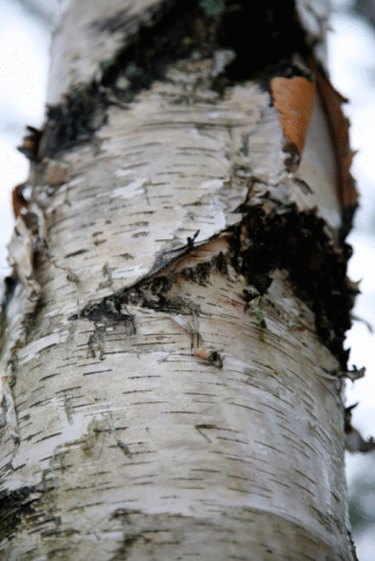
Native to the northern hemisphere, copper river birch (Betula nigra) is a fast-growing deciduous tree. Although native to the far north, it will grow in U.S. Department of Agriculture hardiness zones 4 through 9a. It makes a good street tree because it is not bothered by pests or diseases, although it can be relatively short-lived, beginning to decline after about 30 to 40 years.
Appearance
Video of the Day
A hardwood deciduous tree, copper birch grows 40 to 50 feet high and 25 to 35 feet wide. It quickly forms a dense, oval to pyramidal crown. Unlike the more well-known birches with white bark, copper birch has reddish-brown, peeling bark. Because the bark peels at all times of the year, it also provides winter interest, especially in a snowy landscape. Neither the flowers nor the fruits of copper birch are considered notable. The leaves turn a brilliant yellow in fall.
Video of the Day
Site
Native to the far northern latitudes, copper birch is found growing along stream and river banks. It can survive in soil that is wet for weeks at a time. It prefers soil with a pH on the acid side of the scale, similar to the needled evergreens that also grow in the far northern latitudes.
Care and Culture
Plant copper birch in soil that is slightly acidic, similar to that required for pine or other evergreens. It grows well in heavy clay or other compacted soil with low levels of oxygen, but will grow best with large amounts of water. Provide copper birch with supplemental irrigation during dry periods throughout its lifetime. Supplemental feeding is usually not necessary, providing the soil in which it is growing is acidic enough.
Uses
The bark of birch trees was traditionally used to make canoes, as well as other water-tight tools or utensils. Its bark was also used as part of the materials in a traditional roof in Scandinavian countries. The oils from the bark are used in paints or ointments. The sugars extracted from birch wood are used to produce artificial sweetener. In times of famine, the inner bark of birch trees was consumed either dried or cooked. It can also be used as a flour when mixed with wheat, barley or oats.